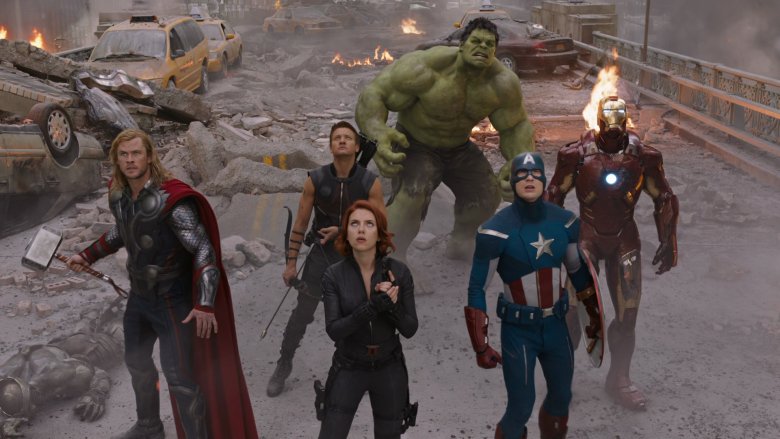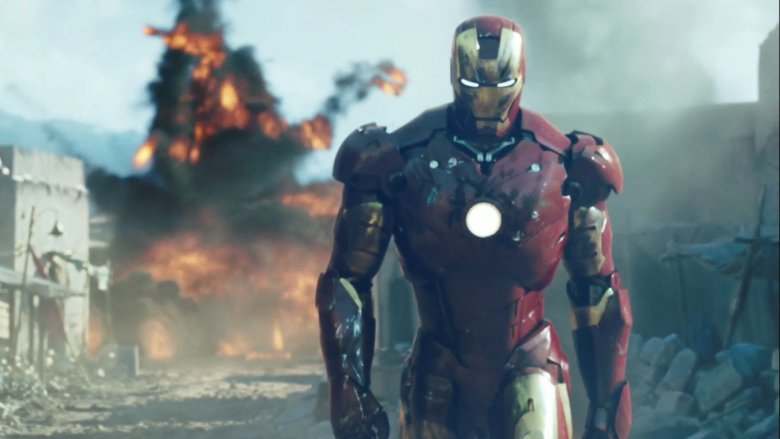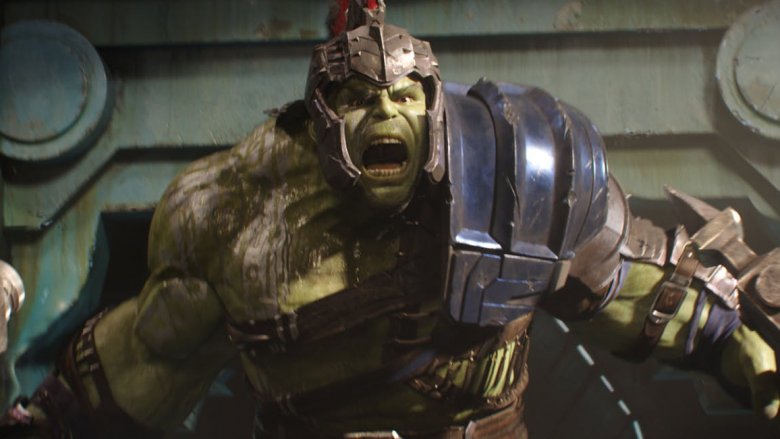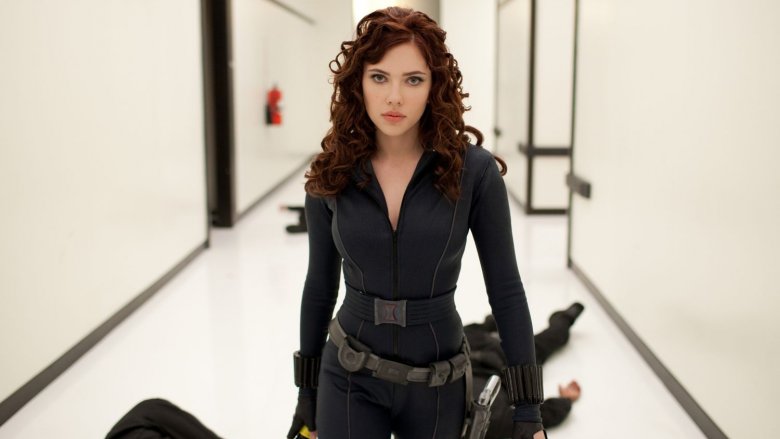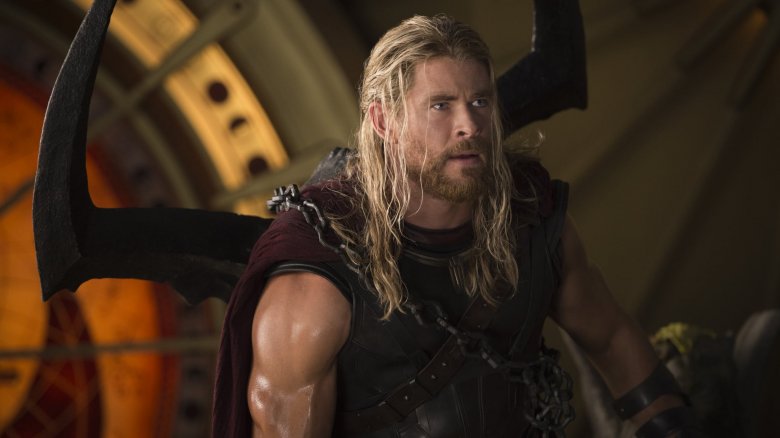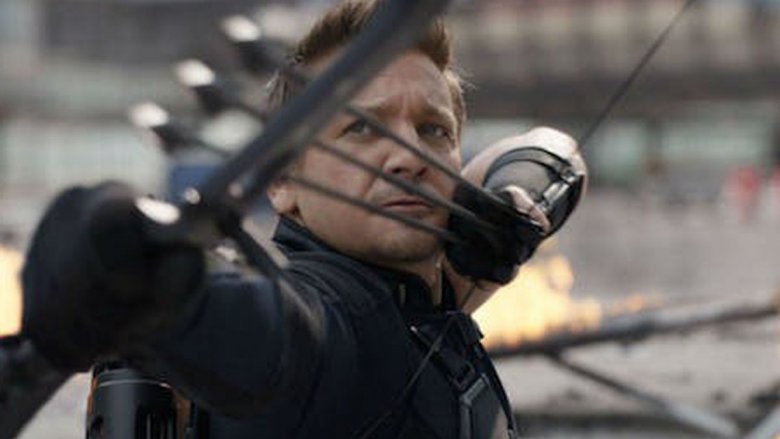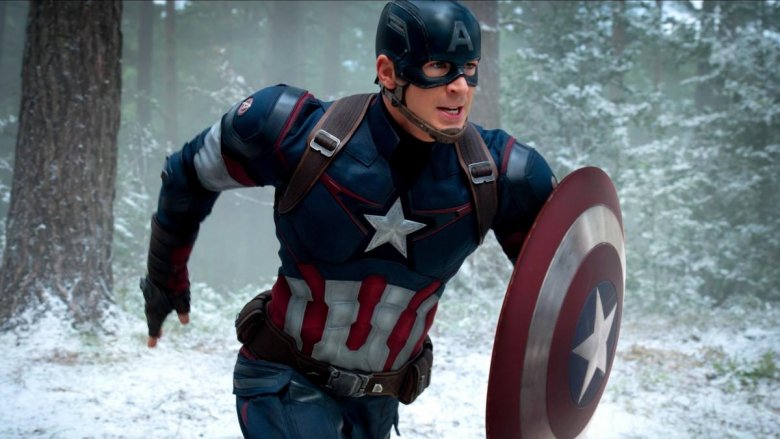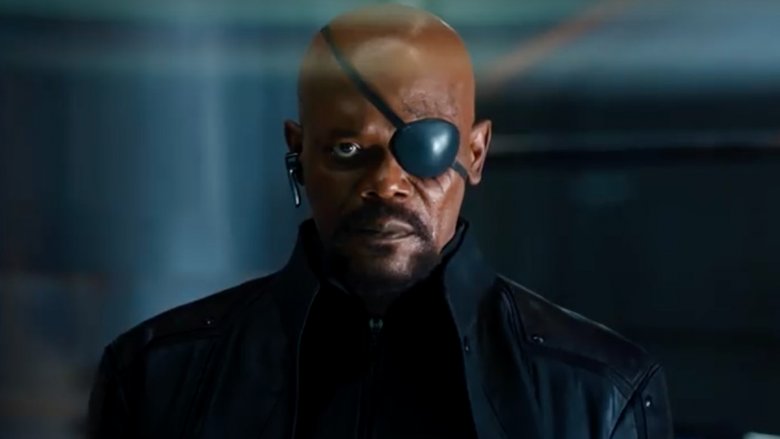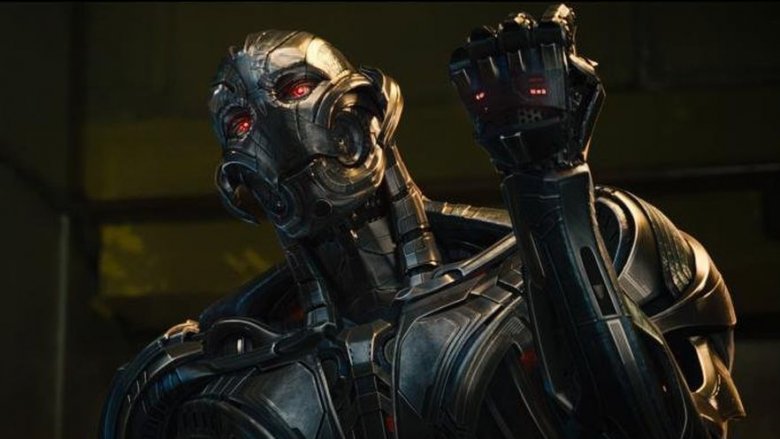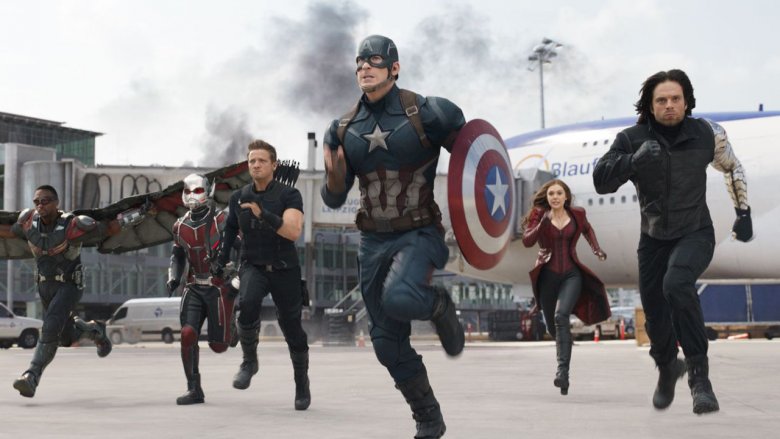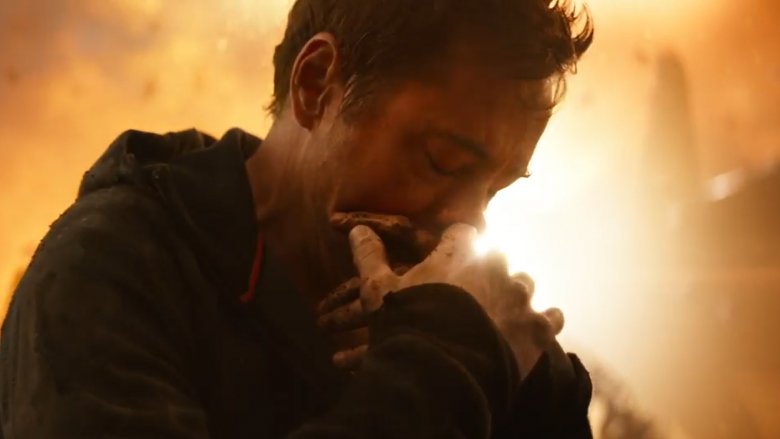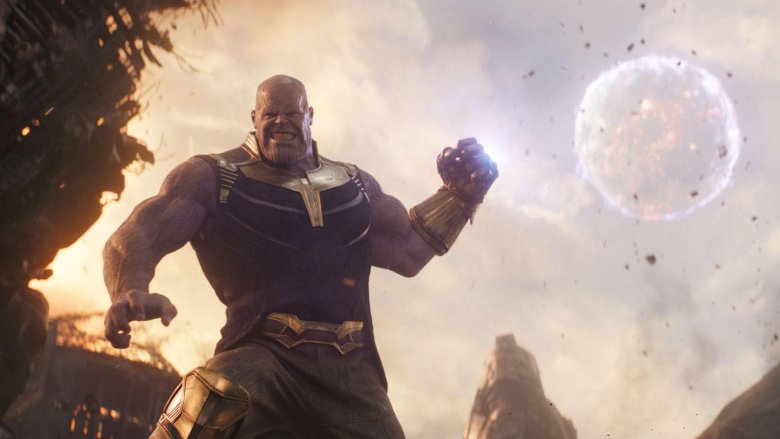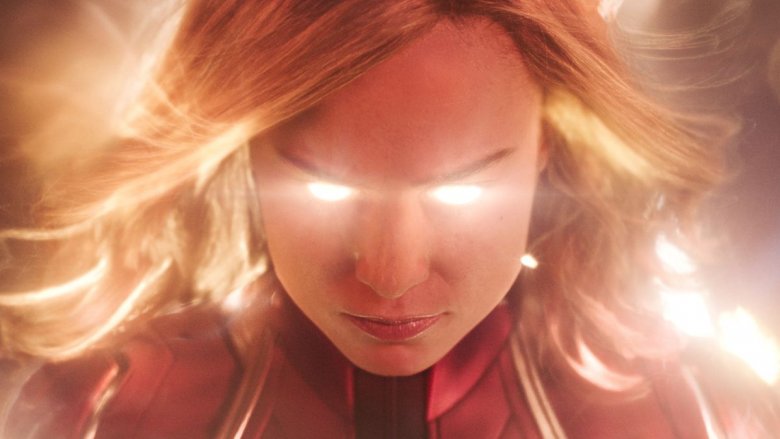How Each Avenger Got To Endgame
Captain America, Iron Man, Thor, Hulk, Black Widow, and Hawkeye. These six heroes have led the charge within the Marvel Cinematic Universe for over ten years and twice as many movies. Over that time, each character's saga has slowly unfolded, some through trilogies of films and others through numerous cameos and sidebars within the larger scripts. No matter what the path, though, all six of their stories have led to one place: Endgame.
As the last film on Marvel's Phase 3 slate, Endgame will be important not just for the MCU as a whole, but specifically for this intrepid band of original Avengers. After all, not one of the six were victims of the Decimation. Just a coincidence? Not likely. The stage seems set, and one way or another, Endgame is going to bring some closure to members of the superhero posse we've come to know and love over the years.
With Endgame bringing them all together again, it seems fitting to go over each of the Big Six's story arcs leading up to this epic crescendo. Of course, trying to watch every MCU movie in a row is a nearly two-day-long endeavor at this point, which means fitting it in before watching Endgame can be a bit of a challenge. We've gone ahead and condensed each character's story arc for you — here's how each Avenger got to Endgame.
The Iron Avenger
The MCU got its start when Iron Man arrived in theaters in 2008. Robert Downey Jr.'s impressive performance introduced us to a narcissistic Tony Stark who was used to having things his own way... until he got kidnapped by the Ten Rings and had to build his first Iron Man suit to regain his freedom. From there he etched his name into the Marvel hall of fame by helping stop threats like Iron Monger, Whiplash, the Chitauri invasion of New York, Aldrich Killian, and Ultron.
But Stark's true arc always focused on his own inner struggle as he came to grips with who he was without his "tricks and toys." Once just a billionaire playboy, the man has slowly evolved into a thoughtful, caring hero. His loyalty to Pepper Potts and father figure status to Peter Parker are excellent examples of how he's matured over time.
And then there's the role he's played in setting the stage for the Thanos epic. His prophetic vision in Age of Ultron gave him a unique sense of urgency that continued to fuel him as he tried to prepare for the Mad Titan's impending arrival. Thanos clearly had an affinity with the Iron Avenger, too, as shown through his assertion that they were both "cursed with knowledge" during Infinity War, leaving a potential showdown between these two in Endgame a positively tantalizing prospect.
The Jade Giant
While Hulk has been a bit of an enigma throughout the MCU thus far, his story can basically be broken down into three eras. First, we have his solo film, which came out after Iron Man. It showcased Bruce Banner (played by Edward Norton) already on the run, in love with Betty Ross, and relentlessly pursued by her father. The film ended with Banner having more or less come to terms with "the Other Guy."
The second era opened up when Mark Ruffalo picked up the mantle in Avengers. Banner and the Green Machine seemed to have taken a few steps back at that point, as neither wanted to surrender control to the other. The duo continued to help the Avengers for a while afterward, and sparks even began to fly between Banner and Black Widow in Age of Ultron. But it all came to a screeching halt when Hulk took over at the end of the movie and flew the Quinjet into space.
The third era began when Hulk showed up two years later in Thor: Ragnarok, beginning a three-movie character arc. This new story continued as Hulk remained out of sight throughout most of Infinity War. The end of the three-part story will take place in Endgame, with some sort of climactic event likely in store for the Jade Giant.
The Master Assassin
Natasha Romanoff has had an interesting MCU journey so far. She hasn't had an opportunity to headline her own film yet — a problem that is finally being addressed — but she's still managed to find a meaningful place in several Marvel movies. While she isn't equipped with quite the same overpowered skill set as many of her fellow heroes, Black Widow has proven to be an absolutely invaluable addition to the team over the years.
She first appeared in Iron Man 2, already trained as an accomplished spy and assassin working for S.H.I.E.L.D. She flaunted her training in multiple scenes, from taking down Tony Stark in a single move to infiltrating Hammer Industries without breaking a sweat. She showed up again in Avengers and played a critical role in ending the Battle of New York when she closed the portal with Loki's Scepter.
She went on from there to help topple HYDRA's infiltration of S.H.I.E.L.D and bring Ultron down in Sokovia. She turned heads yet again when she stood with Team Cap in Civil War, helping Captain America and Bucky Barnes escape in the Quinjet. She re-emerged with Cap and company in the early minutes of Infinity War and made her presence known throughout the fight in Wakanda. Black Widow has been featured heavily in the Endgame trailers, and seems likely to be right by Cap's side when the action picks up again.
The King of Asgard
Thor has enraptured fans since the moment Mjolnir was seen in the end credits scene of Iron Man 2. The Son of Odin kicked things off on a low note in Thor by being sent into exile after he disobeyed his father. However, by the end of the movie, he had grown into a character that appreciated the seriousness of his responsibilities as a prince of Asgard.
After his opening film, he provided some serious muscle for the Avengers in the Battle of New York. He then flew off to stop the Dark Elf Malekith from wiping out the entire universe in his second solo adventure. From there he doubled back to Earth, where he helped stop Ultron and conducted some preliminary Infinity Stone research. However, the character truly hit his stride in Thor: Ragnarok. The humor-infused capstone to Thor's trilogy brought a whole new angle to the Asgardian as he struggled with the loss of his father, took down his sister, and ultimately took up his kingship. The movie also set the stage for Infinity War, which opened with many of the surviving Asgardians being wiped out by Thanos.
During Infinity War, Thor's character arc reached an electrifying conclusion as he forged Stormbreaker, summoned the Bifrost on his own, and even managed to land what looked like a fatal blow against Thanos. It's no understatement to say that the King of Asgard enters Endgame ready for a rematch.
The Archer
Much like Natasha Romanoff, Clint Barton has made an MCU living off cameos and supporting roles, and his lack of superpowers naturally puts him at a disadvantage. But that's never done much to stop the arrow-wielding hero from making his mark. Hawkeye made his first appearance in Thor as an agent of S.H.I.E.L.D. He showed up again in Avengers, when Loki possessed him with the Mind Stone. Once he was freed from the Asgardian's influence, however, he was quick to join the Avengers in their successful defense of New York City.
From there, his path led to Age of Ultron, when he brought the refugee Avengers to his family's home. The revelation that Barton was, at heart, a family man brought a new dimension to the character. After the mess in Sokovia, Barton retired from the Avengers only to be drawn back into the fray by Cap during Civil War. The whole affair ended with him under house arrest.
As Natasha reminded everyone during the scene at the Avengers HQ in Infinity War, he was still in the midst of his two-year sentence during that movie. While he may have sat out for the first half of the two-part epic, the trailers for Endgame have revealed that chances are good we'll see quite a bit more Barton, this time likely under the guise of Ronin.
The Super Soldier
While it may seem hard to believe, Steve Rogers was the last of the big six to make his entrance into the MCU. His first solo movie, coming right before Avengers, traced Rogers' path from a rejected military recruit to the super soldier Captain America. After stopping Red Skull in his origin film, Cap went on to save the world again in Avengers, becoming the heart and soul of the superhero team.
Next, Cap teamed up with Black Widow and Sam Wilson, a.k.a. Falcon, to take down a HYDRA-infiltrated S.H.I.E.L.D. in Captain America: Winter Soldier. From there he led the Avengers in their battle against Ultron in the second Avengers installment. In Civil War, he chose to defend Bucky Barnes, put his shield through Iron Man's chest armor, and was forced to go into hiding. He re-emerged from exile in Infinity War after being informed of Thanos' imminent arrival.
There's no doubt that Cap is more than capable of holding his own in a fight. But, much like Tony Stark, his true journey so far has revolved around his inner struggles. Over time he's shifted from a shining beacon of national hope to a fugitive on the run from the very government that created him. No matter how bad things have gotten, Steve Rogers has never lost his ability to follow his moral compass, a fact that will certainly play into his decisions in Endgame.
The Avengers Initiative
While the six founding Avengers have all had their own personal story arcs throughout the first three phases of the MCU, the story of their alliance as a team of Earth's mightiest superheroes has also played a prominent role in the leadup to Endgame. Thanks to Captain Marvel, we now know that Nick Fury was given the idea to create the "Protector Initiative" in the mid-'90s after seeing how real the threat of an intergalactic invasion could be. Of course, he fittingly renamed it the "Avengers Initiative," creating the famous moniker for the superhero squad, after he saw that it was Danvers' call sign in the Air Force.
The first Avengers featured Director Fury as he assembled the Avengers to face the threat of Loki and the Mind Stone. Sure, the team had a few early issues, but you can't gather that many eccentrically powerful personalities into a single group without expecting some kind of friction. Besides, who doesn't want to watch Thor take on the Hulk in a helicarrier? But after getting over those growing pains, they meshed together beautifully as they took on Loki, bottled up the Chitauri hordes in NYC, and sent a nuke as a parting gift before closing up the invasion portal. As the credits rolled, the team looked mighty fine.
The Age of Ultron
Almost an entire phase after the first Avengers movie, its sequel, Avengers: Age of Ultron, arrived in theaters. The Battle of New York spooked Tony Stark enough to begin working on what he called the Ultron Program, which was meant to protect the world from future global threats. Of course, the whole experiment went horribly wrong when they introduced the Mind Stone to the equation, inadvertently creating Ultron in the process.
Age of Ultron wasn't necessarily the best movie in the MCU, but it did help move the Avengers' storyline forward as they were forced to deal with the threat of Ultron and his desire to wipe out humanity. It also provided an opportunity for the team to grow, as the story introduced Scarlet Witch and Vision. Both characters have become Avenger staples since, and are even getting their own miniseries.
Ultron also served as a launchpad for Thanos and the Infinity Stones to move toward center stage. While Infinity War was still eight movies away, Age of Ultron showcased Thor seeing visions of the Infinity Stones and Tony having his terrifying, Wanda-induced vision of the future.
Civil War
After their high point in Avengers, the next chapter of the group's history would be shadowed by internal friction. As if Ultron wasn't bad enough, just a couple of movies later the Avengers turned on each other in Captain America: Civil War. With Hulk away on Sakaar and Thor out looking for the "puppet master," the third installment of Cap's trilogy saw the rest of the gang fall out hard after an operation went south, leading to civilian casualties and a public relations nightmare. The event sparked the demand for the Avengers to sign the Sokovia Accords, which were designed to provide a measure of government control over superpowered vigilantes.
Split over whether to sign the Accords or not, Tony Stark and Steve Rogers rallied the Avengers into two separate groups before duking it out during the famous airport battle in Leipzig. The story ended with Rogers and company on the lam, with the rest of the Avengers either technically operating under government control or under house arrest. Needless to say, it was a low point for the team.
Infinity War
The next time the entire team was seen in action was when Thanos showed up, and the results were anything but pretty. Infinity War began with the Mad Titan and his minions embarking on their quest for the Infinity Stones in earnest, and for much of the movie, the Avengers were scattered across the galaxy, all fighting to the best of their ability on their own. While several team members were able to provide a united front in Wakanda, and Iron Man and Spider-Man were able to team up with Doctor Strange and the Guardians of the Galaxy on Titan, Thanos ended up having relatively minimal trouble getting through each of the groups separately.
As the Infinity War credits rolled, Tony Stark was stranded on the other side of the solar system, with the remaining Avengers wallowing in the dust back on Earth. The questions that remain going forward are if, how, and when the team will finally reassemble, for the first time since the end of Phase 2, to take on Thanos with a finally united front.
The Infinity Saga
In an interview with Empire Magazine, Marvel boss Kevin Feige explained just how important Endgame is as a capstone for the entire first three phases of the MCU. "We wanted to bring to a conclusion a series of movies in a way that had never been done before," he explained, adding that "Harry Potter had an ending because there were only so many books. Lord of the Rings too. But we thought, 22 movies in, wouldn't it be fun to bring some finality to the storyline?"
The knowledge that the creators themselves see Endgame as a sort of capstone for the first three phases of Marvel movies is reason enough to expect that the Avengers, particularly the central six that have been so focused on so far, will play critical roles. The fact that they were all left standing — along the heavy focus on them in the promotional material for Endgame — seems to imply that the "Infinity Saga" that started with the founding Avengers will end with them as well.
Endgame and beyond
While the Infinity Saga may be drawing to a close, the sky is the limit for the Marvel Cinematic Universe as the studio moves forward from Endgame. At this point, a whole new batch of potential Avenger material is available in the form of newer characters like Spider-Man, Black Panther, and the newest member of them all, Captain Marvel. In addition, there's the boatload of A-list Marvel characters brought into the fold thanks to the Disney/Fox merger.
The point is, Marvel has a lot to work with, and the abundance of options opens up the possibility for Endgame to be more than a long-awaited reunion of old friends saving the world yet again. It also potentially could serve as a closing act for Cap, Iron Man, and company as they make room for fresh faces like Carol Danvers, King T'Challa, and other new heroes following in their wake. While it's sad to think of going into Phase 4 without all of the original Avengers around, there's no doubt that their influence will continue to be felt for years to come.
